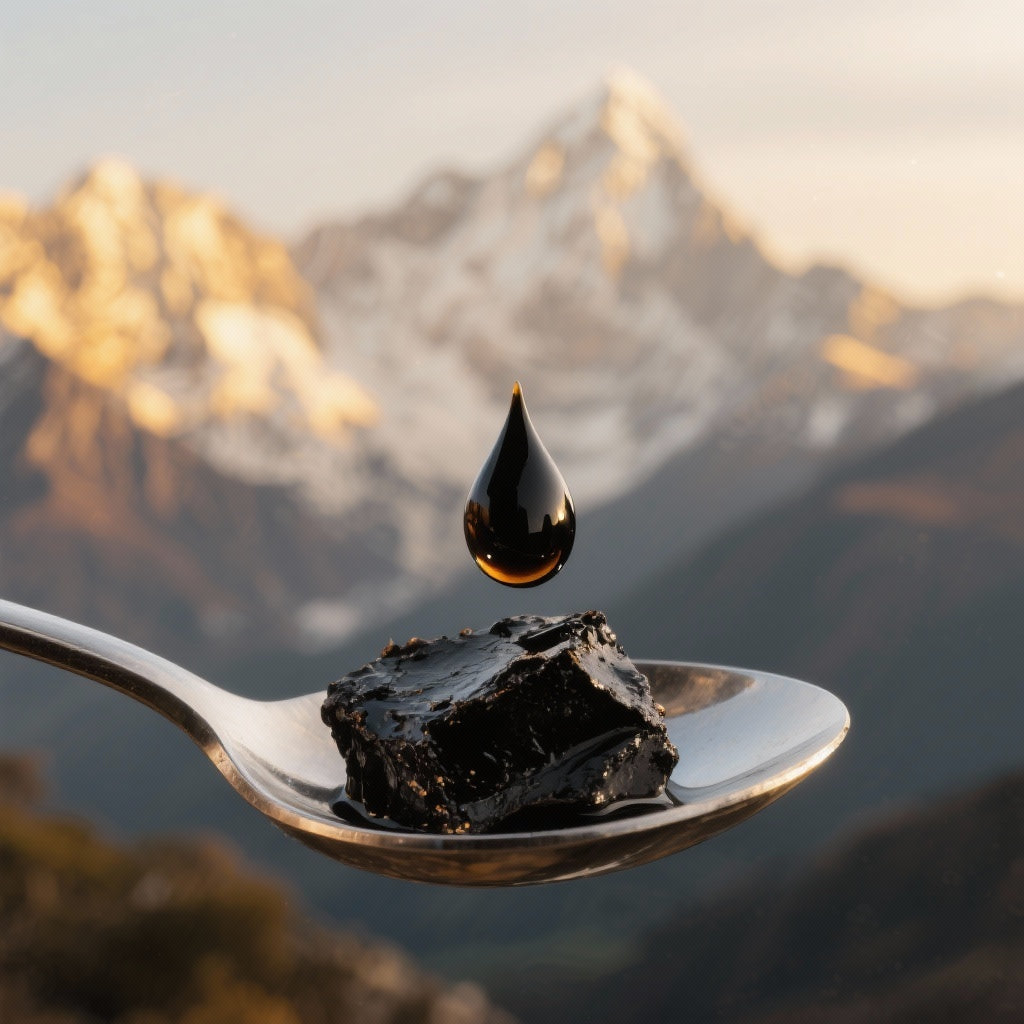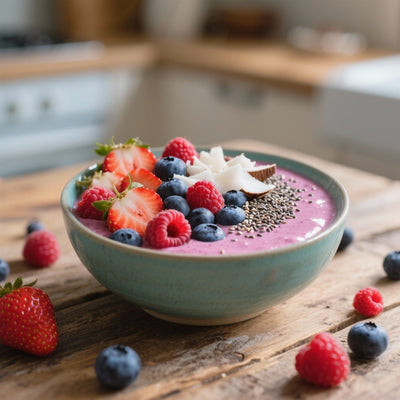Shilajit, this enigmatic resin harvested from the crevices of the Himalayas, has been revered for centuries in Ayurvedic medicine for its ability to revitalize the body. But beyond the legends, a complex and fascinating science explains its power. At the heart of this science are humic substances , a cocktail of organic molecules that act as the biological engine of Shilajit. You've heard about its benefits, but you're wondering what the real mechanism is behind this ancient substance?
This article unveils the secrets of these extraordinary compounds. We'll break down the science of humic substances, explore their key components like fulvic and humic acids, and reveal how their unique synergy can transform your well-being. Prepare to understand not only what Shilajit does, but more importantly, how it does it.
What are humic substances? A clear definition
Imagine the concentrated essence of millennia of plant life, decomposed and transformed under immense pressure deep within the mountains. This, in essence, is what humic substances are. They are not a single compound, but rather a heterogeneous family of complex organic molecules formed by the microbial decomposition of plant and animal matter. They constitute the most stable fraction of organic matter in soils, sediments, and natural waters.
In the context of Shilajit, these substances are the end product of a process spanning centuries. Medicinal plants, mosses, and nutrient-rich lichens are trapped between layers of rock. Under the influence of tectonic pressure and microbial activity, this biomass slowly transforms into a dense, black resin, extraordinarily rich in humic substances and more than 84 minerals and trace elements.
The soul of organic matter: A millennia-old process
The formation of Shilajit is a masterpiece of nature. It is not simply tree sap or a mineral substance, but humus , an organo-mineral material. Think of it as the oldest and most potent compost on the planet. This slow, natural process guarantees a concentration and molecular complexity that is impossible to replicate in a laboratory. It is this unique origin that gives Shilajit and its humic substances their exceptional biochemical profile.
The two main components of humic substances: Fulvic acid and Humic acid
Within the large family of humic substances, two main players stand out due to their complementary and crucial roles in human health: fulvic acid and humic acid. Although they work together, their structures and functions are distinct.
"Fulvic acid acts as an intelligent delivery system, while humic acid functions as a cleaning service, protecting and purifying the cellular environment."
Fulvic Acid: The Intelligent Nutrient Carrier
Fulvic acid is the champion of bioavailability. Due to its very low molecular weight, it can easily penetrate cell walls. Its main function is chelation : it binds to minerals and trace elements, transforming them into an organic form that our cells can absorb and use with maximum efficiency. Without fulvic acid, many of the minerals we consume would simply pass through our system without being absorbed.
- Optimized absorption: It can transport more than 60 times its own weight in vitamins and minerals directly into the cells.
- Cellular energy: By improving the supply of nutrients to mitochondria, the powerhouses of our cells, it helps to combat fatigue at its source.
- Powerful antioxidant: It neutralizes free radicals and helps reduce oxidative stress, thus protecting cells from damage.
- Intracellular detoxification: It can bind to heavy metals and toxins already present inside cells and help escort them out of the body.
Humic Acid: The protective and detoxifying guardian
While fulvic acid works inside cells, humic acid, with its larger molecular structure, operates primarily in the digestive system and bloodstream. It acts as a first line of defense, a powerful binding agent that neutralizes threats before they can cause harm.
Its complex molecular surface acts like a magnet for a variety of harmful substances. It attracts them, binds firmly, and prevents them from being absorbed by the intestines, thus facilitating their safe elimination. It's a gentle yet profound detoxification process.
The primary functions of humic acid
- Binding to toxins: It sequesters heavy metals (such as lead and mercury), pesticides and other environmental pollutants in the digestive tract.
- Microbiome balance: It helps create a healthy gut environment, promoting the growth of good bacteria while inhibiting the proliferation of pathogens.
- Immune support: By reducing the toxic load and preventing pathogens from crossing the intestinal barrier, it relieves the immune system and allows it to function more effectively.
- Anti-inflammatory action: It has been shown to help modulate the body's inflammatory response, particularly in the gut.
The synergy of Shilajit: More than the sum of its parts
Isolating fulvic acid or humic acid, as some supplements do, misses the point entirely. The true magic of Shilajit lies in the entourage effect of its full spectrum of humic substances. Fulvic acid transports Shilajit's 84 trace elements into cells, while humic acid clears the way. Other compounds, such as humins and dibenzo-α-pyrones (DBP), also play antioxidant and protective roles.
It is this complex matrix, created by nature over millennia, that offers benefits that no single component could match. Choosing pure and authentic Shilajit means choosing to benefit from this powerful natural synergy. Discover our range of pure Shilajit and experience the difference a quality source can make.
Frequently Asked Questions (FAQ)
What is the difference between fulvic acid and Shilajit?
Shilajit is the raw, natural, and complete substance. Fulvic acid is just one of its many active components. To think that fulvic acid alone is as effective as Shilajit is like thinking that vitamin C alone is as beneficial as a whole orange, which contains fiber, flavonoids, and other synergistic nutrients.
Are all humic substances identical?
Absolutely not. The quality, concentration, and molecular profile of humic substances vary enormously depending on their source. Those derived from low-quality soils or lignite (a form of coal) lack the complexity and purity of those found in high-altitude Shilajit. Shilajit's Himalayan origin guarantees a rich profile, forged from a unique medicinal plant biomass.
How can I tell if my Shilajit is rich in humic substances?
High-quality Shilajit should be lab-tested by a third party to confirm its fulvic acid and mineral content, as well as to ensure it is free of heavy metals. Look for transparency from the seller, including access to certificates of analysis. Authentic Shilajit will have a deep black color, a resinous texture, and a distinct smoky, earthy aroma.
Conclusion: The intelligent power of nature
Humic substances are more than just an ingredient; they are the biological intelligence that animates Shilajit. Through the combined action of fulvic acid, which nourishes our cells, and humic acid, which protects them, Shilajit offers a holistic approach to vitality, detoxification, and overall well-being. Understanding this science allows us to appreciate the depth and wisdom of this ancient remedy.
Now that you know the secret to its power, the next step is to consciously integrate it into your routine. Ready to experience the ancient science of the Himalayas?











